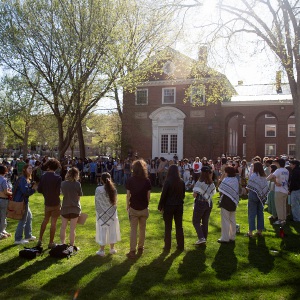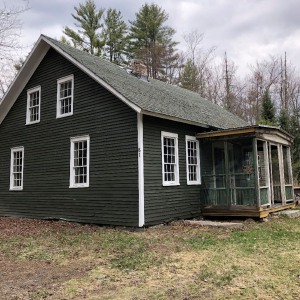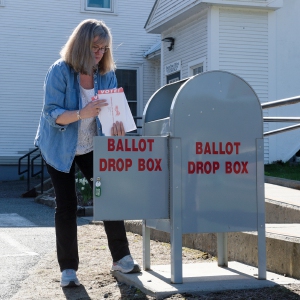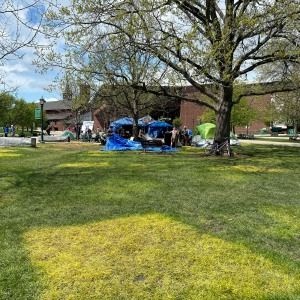Binge drinking, alcohol use disorder in Vermont ranked among the highest in the nation
| Published: 04-03-2024 3:26 PM |
Journey to Recovery, an addiction recovery center in the Northeast Kingdom, refers two people a week to inpatient treatment for alcohol use disorder.
At the other end of the state, 2 out of 3 patients that Bennington Turning Point recovery coaches see through their emergency room program primarily have alcohol dependency issues.
In Rutland and Springfield, local recovery coaches are also seeing an increasing number of people aged 60 and up who are seeking help for alcohol misuse.
“Every collaborative partner is aware of the high rate (of alcohol misuse),” said Tracie Hauck, director of the Rutland Turning Point Center, “and the increased use among older adults.”
A recent national survey reflects this gloomy picture of alcohol use in Vermont. The National Survey on Drug Use and Health for 2021 and 2022 show Vermont had the second highest rate of alcohol use disorder among the states.
Alcohol use disorder is diagnosed based on several criteria. They include whether a person ended up drinking more or longer than they intended, wanted a drink so badly they couldn’t think of anything else or drinking interfered with taking care of their family or work.
Vermont showed a 12% rate for this disorder, same as six other states. The highest, 14%, was found in Colorado and North Dakota.
The survey, conducted annually by the federal Substance Abuse and Mental Health Services Administration, also ranks Vermont as No. 2 for binge drinking. It’s defined as having five or more drinks (for men) or four or more drinks (for women) within a couple of hours of each drink on at least one day in a month. Some 27% of Vermonters acknowledged drinking this way.
Article continues after...
Yesterday's Most Read Articles
 Dartmouth administration faces fierce criticism over protest arrests
Dartmouth administration faces fierce criticism over protest arrests
 Hanover house added to New Hampshire Register of Historic Places
Hanover house added to New Hampshire Register of Historic Places
 Sharon voters turn back proposal to renovate school
Sharon voters turn back proposal to renovate school
Another survey question asked whether people consumed alcohol in the past 30 days. Vermont placed third nationwide, at 57%. The survey respondents included adults and children ages 12 to 17. Among adults, the prevalence is 61%.
Alcohol is the most commonly used substance by Vermonters, and adult Vermonters’ drinking behavior has remained consistent since 2011, said Anne Van Donsel, of the Vermont Department of Health’s division of substance use programs.
Referring to previous state reports, Van Donsel underscored that alcohol not only causes overdose deaths, it also contributes to health problems.
The long-term health risks include weakening of the immune system, learning and memory problems, high blood pressure, anxiety and depression, and cancer.
“We have seen people in their 20s given six months to live due to a confluence of complications directly from excessive alcohol consumption,” said Margae Diamond, director of the Bennington Turning Point Center.
The fact that alcohol is a legal substance and part of the American cultural fabric, she said, makes it “intensely difficult” for those who are suffering from alcohol misuse to admit they have a problem, seek help and remain sober.
Diamond said she is glad that alcohol dependency in Vermont is getting more public attention, since alcohol is a substance that people often struggle with but has been overshadowed by the state’s opioid epidemic.
“The majority of funding and attention tends to lean towards opioid use disorder and while there is no debate that is serious and often fatal,” she said, “we consistently see more people for alcohol use disorder.”
Staffers at addiction recovery centers statewide said that, since the coronavirus pandemic reached Vermont in 2020, they’ve had growing interactions with people aged 60 and older who are struggling with alcohol misuse.
Astrid Bradish-Hoyt, a peer counselor at the Turning Point Center in Springfield, said more older adults and elderly people are now calling the center to seek recovery services. Others cross paths with local peer counselors through their emergency room outreach, where they offer recovery assistance to people who are brought in for substance-related health emergencies.
“Elderly people get very isolated,” said Lila Bennett, director of the Journey to Recovery Community Center, echoing what other centers pointed to as a reason for alcohol misuse among this age group. This social isolation became especially marked during the early years of the Covid-19 pandemic due to social distancing regulations.
The state health department, meanwhile, said its data does not reflect a bump in chronic drinking or at-risk drinking behavior among elderly Vermonters.
The state numbers, from 2011 to part of 2022, show consistent alcohol use among those aged 65 and older, said Van Donsel, of the substance use programs division.

 Students take down pro-Palestinian encampment at UVM
Students take down pro-Palestinian encampment at UVM
